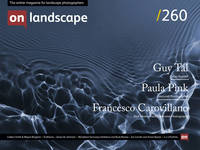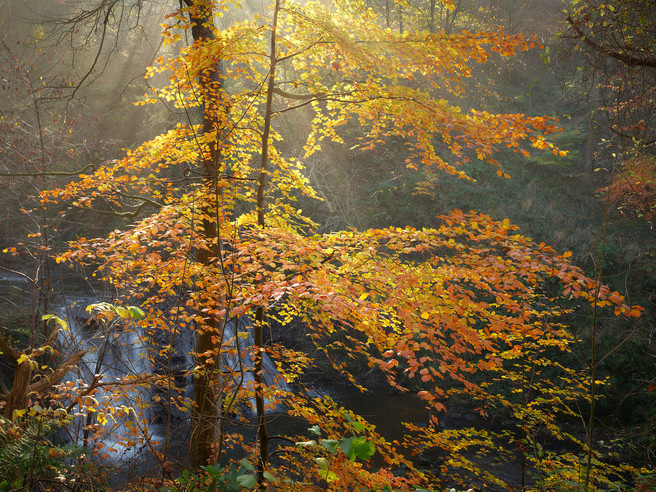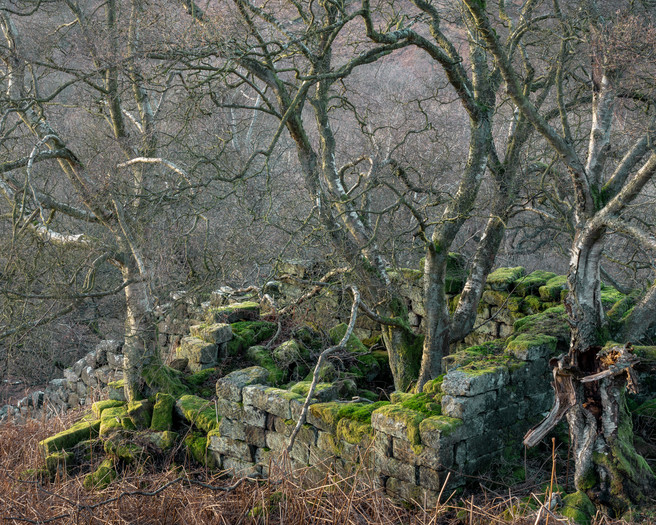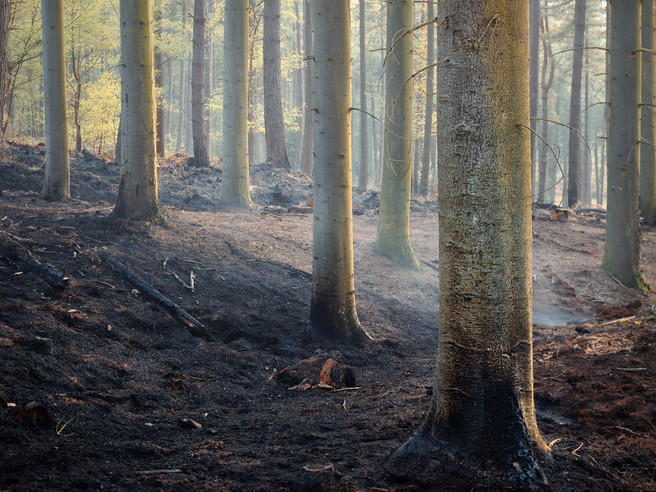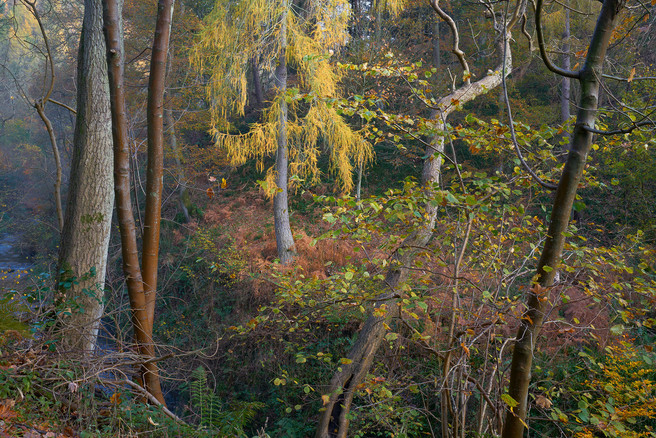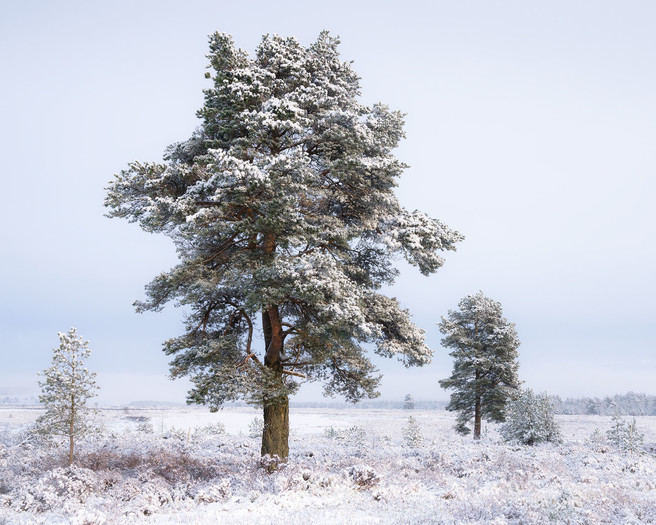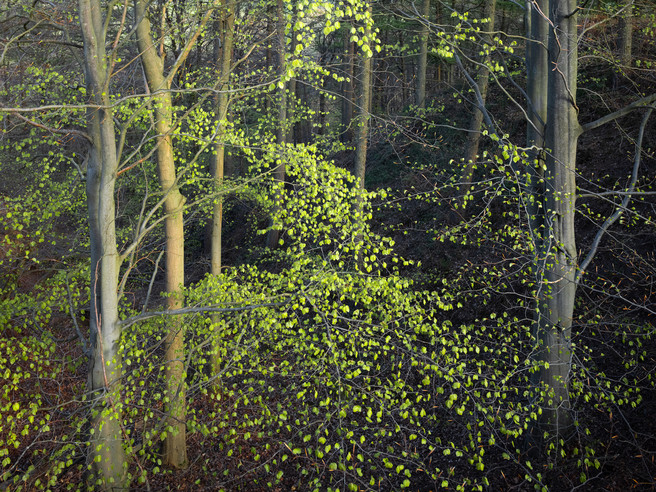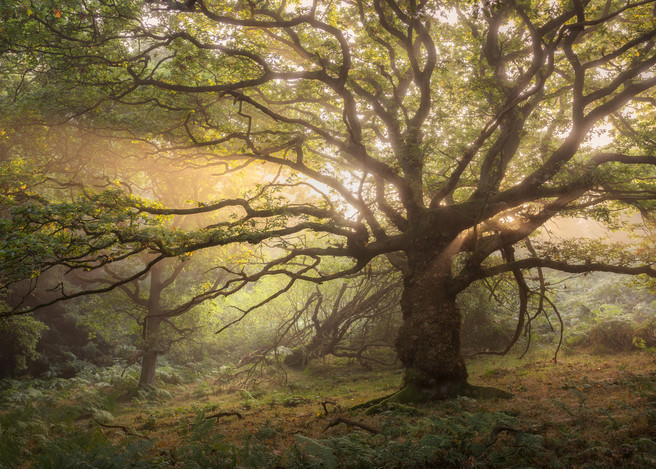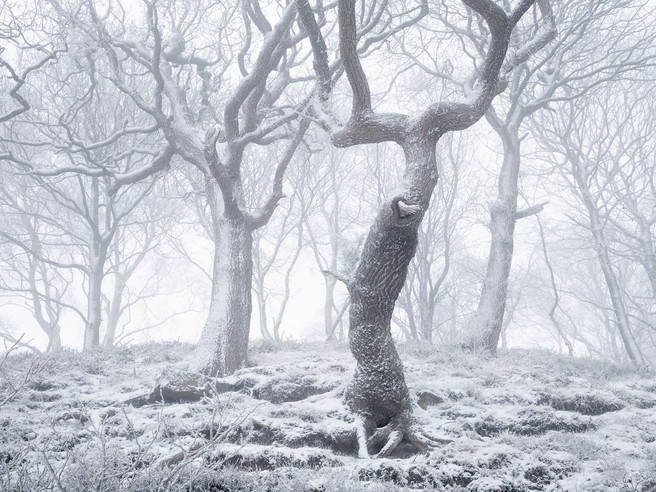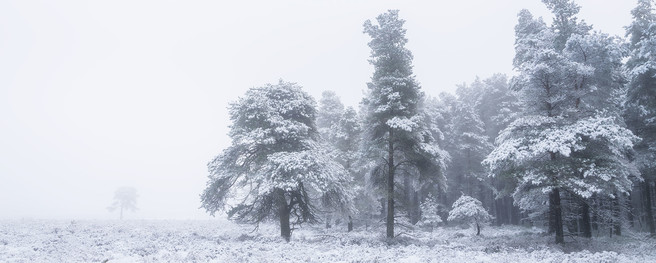Trees and woodland of the North York Moors

Joe Cornish
Professional landscape photographer.

Simon Baxter
Driven by the therapeutic benefits of the great outdoors, my passion lies in local woodland and the endless opportunities & challenges it provides. I crave atmosphere, experiences and unique moments in solitude that serve as a constant reminder that there is far more to photography than a photograph
The exhibition opens at the Danby Lodge (formerly The Moors National Park Centre) on 16th July and will run until 12th September. Entry is free and you can find more details on Simon Baxter's website.
Woodland Sanctuary is a joint exhibition between photographers Simon Baxter and me, Joe Cornish. The work was gathered over the last five years, all of it within the North York Moors National Park.
One obvious restriction of the pandemic was the obligation to stay at home. But no travel created an opportunity to explore our local area more widely and deeply. For Simon that was more or less an extension of his existing practice. For me, it was a chance to deepen the local emphasis I had taken years before, but with a growing focus on woodland.
In our different ways, this converging concentration on trees happened almost simultaneously. Simon’s injuries had led him into the woods as solace and relief from persistent pain. My growing fascination was driven in part by increasing alarm about the environmental crisis… trees seem both a symbolically and scientifically critical resource in preserving biodiversity and mitigating climate change. Whatever our motivation, we both found therapeutic value and artistic inspiration among trees. In May 2019 when we were comparing notes via email, Simon suggested sharing a location he’d discovered. It turned out I had walked through the same woodland the previous month with friends and was intrigued to join him. It was the first of many shared excursions.
The work we had done before, and still the majority since, have been solitary trips. But increasingly as we exchanged pictures and ideas there was a sense of solidarity and shared inspiration. The pandemic accelerated the process (for me especially) as the distractions of more distant travel evaporated.
We recognised that while our work was distinct, the similarities were based on a shared value of respecting the appearance of things as they really are, photographically speaking. This attachment to visual reality is the philosophical basis for the exhibition. There is always a degree of translation and interpretation, but the sense should be that what we saw could have been seen by anyone else standing next to the photographer in that moment.
Natural woodland, forest and trees are no longer taken for granted by policy-makers and corporations. Countless books have appeared about them recently revealing their scientific details, community relations, their cultural and evolutionary importance, their endless utility to humans etc. They are recognised for the critical role they play in the biosphere, carbon sequestration, and in our wider culture. In this new atmosphere of interest and understanding of trees, a photographic/artistic perspective seemed especially timely.
The Inspired By gallery at Danby Lodge in the North York Moors seemed the perfect place to hold an exhibition focussing exclusively on the woodland of the National Park. Arranged in a series of artistically inspired themes, we hope the photographs convey a sense of joy and wonder, and sometimes other complex emotions that can be triggered by looking at trees and walking through the woods. The images reflect the intense experience of studying trees in all weather conditions and all times of the year. Beginning with the idea of a journey in ‘A River runs through it’, the exhibition has nine themes in total, ending with the simply named ‘Sanctuary’, to be found in the small studio gallery.
The passages that follow introduce each section for visitors to the gallery…
A River runs through it
Most of the oldest woodland of the North York Moors follows the course of streams, brooks and rivers. The dynamic interaction between cascades, falls, calm pools and wood is a source (literally and metaphorically) of visual delight and an affirmation of life’s dependence on water.
Certain tree species (willow, alder, ash) are especially comfortable with their roots in damp soil, while others prefer the drier slopes. The sound of running water is a therapeutic form of ambient music that helps free the mind from the trivia and distractions of our busy and sociable lives.
Remains of Memory
Surrounded by the comfort and convenience of home, sheltered in our villages, towns and cities we may not notice that buildings, railways, roads and bridges are sometimes abandoned. In a lifetime or two what were once significant homesteads, or even industrial buildings, can be swallowed up by the forest.
The remnants of walls and barely used lanes remind us of the tenuous hold we have on nature. Within three generations all living memory is also lost. Although our influence is profound and pervasive on the planet, abandoned homes show us that the natural world quickly reclaims territory. On the North York Moors, there are many examples, some associated with mining and the birth of the industrial revolution. The natural regeneration that has occurred since is in some sense profoundly reassuring.
Dark Matter
Although woodland is a place of predominantly positive emotions, there are also dark moments. Fires destroy trees and understory; clear-cutting can appear callous, and brutal; ancient broadleaf trees are choked of light and moisture among conifer plantations. Some dark places in the wood can themselves become the stage setting of a nightmare.
Nevertheless, these encounters are important, all part of a landscape story worth confronting, recording and translating. A dark wood can sometimes suggest the menacing presence of the unseen. This darkness reflects our complex, exploitative relationship with nature as well as our own emotional and physical vulnerability.
Chaos Theory
Photographers often seek the elegance of simplicity. However, broadleaf and mixed woodland is the opposite of simple. A tangled wildwood can present the ultimate tortured jigsaw puzzle to torment the photographer. The synthesis of trees and branches jostling for space and light can seem impenetrably complicated, and the impression of chaos profound.
Yet this is also the truth of the wood, and so is an aspect that must be embraced. There is still an obligation to find some sort of order, or pattern, in the confusion of conflicting lines, shapes and textures. Artistically, it’s also an opportunity to embrace the truth of chaos, and use its energy, complexity and discordance to symbolise something of life itself.
The Age of Trees
Our ancestors evolved using the living shelter that trees provided. Until very recently most of the human population have lived beneath, or close to them and depended on wood as our most abundant and reliable tool and building material.
Various technological advances have seen the rise of stone, bronze, iron, steel, aluminium, concrete, glass, plastic, carbon fibre. Yet wood remains unique in its combination of characteristics and subsequently, its utility. Arguably, it is also more beautiful than its geologically-sourced rivals. As we confront the challenge of living more sustainably, we may once again learn to depend on wood as a primary building material. Perhaps this will even lead to a new ‘Age of Trees’?
But there is another interpretation of this title, which highlights how trees grow and prosper over enormous spans of time compared to our own lives. Numerous tree species in the UK grow to many hundreds of years old, and such ancient trees can be found in pockets on and around the National Park. In a typical forest, seedlings appear widely and a few of these may avoid being eaten by deer or other grazers and make it to become saplings and on into maturity. In the complex web of relationships in the forest, this blend of older and younger trees, as well as the astonishing variety of species, is a constant source of wonder and beauty.
Life Cycle
The fabulous fertility of spring and summer, the evocative colours and forms of autumn and winter - these cycles of life are fundamental in the forest every day of the year. And while wildflowers and mushrooms are easily visible, thousands of microbial and smaller species thrive in the cycles of life, decay and rebirth that operate beneath the trees.
It is within woodland that we can readily feel the pulse and rhythm of nature and the wild world operating where it is left largely free from our interference. You could say this makes woodland the most life-affirming of landscape habitats.
Gifts of Light
The raw material of light is an inextricable dimension of every photograph. In one form or another, all artists depend on it as an expressive force. It can even become the subject - an unpredictable, intangible, elusive manifestation of energy.
When everything works like this, solid matter can seem to dissolve, or the sun may project beams through the ether, evoking a divine presence. Such conditions are usually the result of a rare synthesis of high humidity, almost no wind, and discreet pockets of mist that allows the sun to work its magic. Being so short-lived there is rarely time to practise or experiment, and so our photographs are usually reactive, instinctive, making successful images feel special and quite literally ‘gifts of light’.
All the Wood’s a stage
Trees can gesture, point, walk, argue, weep, shelter, talk, encourage, mourn, dominate, dispute, dance, perform. Their range of expression is remarkable, and while these interpretations may seem whimsical, the scientific evidence clearly shows how trees function as a living community.
In a very real sense, they do protect and support each other, and share information through their root and associated systems. Older trees are truly the parents of those that spring from their seeds nearby. Broadleaf trees especially seem to echo the range of human actions and body language - sometimes exuberant, sometimes tired, passive, tortured and even asleep.
They act out a full range of emotions, growing and changing through the course of their lives. Sometimes they are injured by storms, fire, lightning, disease and drought, yet still, they live on – their suffering recorded in their trunks and branches. Through the accumulated scars of age, they reflect back to us something about what it means to live a life.
Sanctuary
A place of shelter from the weather, woods are relatively warm when it is cold, and cool when it is hot. The wood is a stabiliser of temperature and humidity that slows the flow of groundwater. While not all creatures favour woods and forests, they are wildlife refuges as well as human ones. In times of war or extreme economic hardship, people may return to the forest as their only chance of survival.
In times of relative prosperity, the woods are the first places we think of for a walk and exercise. They are a haven of birdsong in the spring. They harbour carpets of bluebells in May, as well as the wonderful aroma of wild garlic. Wildflowers also crowd woodland flanks through the summer, and autumn leaves are a red and gold gift. In winter the naked beauty of broadleaf trees is revealed, with their leaves now decorating the forest floor. Spaces in the wood may feel like a small chapel, or even a cathedral when the light, clearing and moment are just right.
Whether it is a search for survival or the search for beauty and a revival of the senses, our woodlands are a sanctuary.
The exhibition is FREE TO ENTER from the 16th July - 10th September, but some special events and talks require a ticket.
All ticketed events and booking links are listed on Simon Baxter's website.
- Light Flows Through It | Joe Cornish
- River Runs Through | Simon Baxter
- Life Goes On | Simon Baxter
- Nature’s Claim | Simon Baxter
- No Smoke Without Fire | Joe Cornish
- A Look Of Innocence | Simon Baxter
- The Search For Beauty | Joe Cornish
- Descendants | Simon Baxter
- Beech Leaf Murmuration | Joe Cornish
- Tree Of Narcissi | Joe Cornish
- Anticipation | Simon Baxter
- Light Weaver | Simon Baxter
- Winter Clothing | Joe Cornish
- Welcome Home | Simon Baxter

